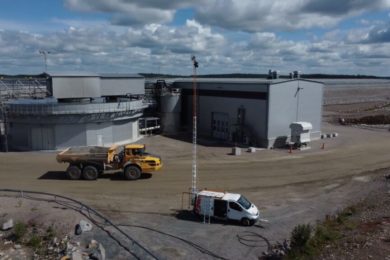 Despite the prospect of an estimated A$2.3 billion worth of lost sales from wet season events beginning early December 2010, Queensland’s export coal industry is moving with determination to restore the state’s leading income earner. Queensland Resources Council Chief Executive Michael Roche said that many of the state’s 57 producing coal mines were working around the clock to pump floodwater from mine sites and secure access to rail transport.
Despite the prospect of an estimated A$2.3 billion worth of lost sales from wet season events beginning early December 2010, Queensland’s export coal industry is moving with determination to restore the state’s leading income earner. Queensland Resources Council Chief Executive Michael Roche said that many of the state’s 57 producing coal mines were working around the clock to pump floodwater from mine sites and secure access to rail transport.
“QRC estimates that about 15% of the state’s coal mines are in full production, with 60% operating under restrictions and a further 25% yet to resume normal operations. At full production, the coal industry is worth A$8.5 million a day to Queensland taxpayers through royalties paid to the state government. It’s essential that the industry is given every opportunity to get back on its feet to restore that flow of much-needed funds to the state government after such a horrendous start to the wet season.
“Until December 2010, the coal industry was on target to deliver the production volumes underpinning Queensland Treasury’s forecast of A$2.8 billion in royalties to Queensland taxpayers this financial year.”
Roche praised the efforts of both the state government and coal rail network owner QR National in supporting the coal industry’s recovery. “QR National has restored the Moura line to Gladstone and we are hoping for similar good news for the Blackwater system later this week. However, it is also clear that the restoration of rail services to mines west of Brisbane and in the Surat Basin are going to take much longer.”
Roche said that to take full advantage of the prospective return of rail services, coal mines and some coal seam gas sites need further dispensation from the Department of Environment and Resource Management (DERM) to pump flood water into nearby creeks that feed strongly flowing watercourses. “QRC has made submissions to DERM last week and is hoping for a response early this week,” he said.
“DERM have been for the most part very responsive to the resources sector’s needs but the QRC has put to them that further leeway is required to deal with this emergency. Just as there is an urgent need to pump water out of buildings in the Brisbane CBD so they can get back to business, the state’s mines are facing the same urgent need.”
Roche described the Queensland resource sector’s response to the flood emergency as “outstanding” with cash donations of more than A$5 million to the Premier’s flood relief appeal to date complemented by donations to resource communities in central Queensland, and in-kind assistance.
“But amid this national outpouring of generosity for flood victims, the response from the Australians Greens has been, quite frankly, sickening,” he said. “To blame the coal industry for floods that have been regular occurrence in Queensland since white settlement simply confirms that despite claims to having mainstream political status, the Greens remain an opportunistic fringe group, out of touch with real Australians. If the coal industry caused the 2010-11 floods, then who we must ask was responsible for the other 16 moderate to major floods in Brisbane since 1840, the 23 in Ipswich and 26 in Rockhampton?”
Queensland has, in the last three weeks, experienced major flooding across 75% of the state. Brisbane has also been severely affected with 11,900 homes and 2,500 businesses completely flooded and a further 14,700 homes and 2,500 businesses partially flooded. After last week’s river peak on Thursday January 13 , Friday saw the beginning of a massive clean-up operation across Brisbane and Ipswich which will continue for some time. The impact of this disaster both from a personal and business perspective is enormous with many flow-on effects predicted.
In a joint statement, Dr Sarah Schwarz (acting CEO of JKTech) and Professor Geoff Gault (Director of the JKMRC), reported that all staff and students at the JK Centre are safe, although a number have sustained damage to property and personal effects. “We are thankful that all staff and students are safe and we will continue to support those who have been adversely affected by the flood.”
The JK Centre at Indooroopilly in Brisbane (housing both JKTech and JKMRC) was unaffected apart from some power outages that made email communication during the past week difficult. Incoming telephone calls have also been impacted. Power has now been fully restored and, apart from those personally affected; it is effectively business as usual for both JKTech and JKMRC.
The JKTech Geometallurgical Laboratory facility situated at Sumner Park in Brisbane’s western suburbs, suffered severe flood ingress. A recovery program is currently underway to ensure that the facility will be operational as soon as possible. In the meantime, laboratory testing activities will be relocated to the JK Pilot Plant. Customers who may be affected by this will be contacted regarding their individual projects.









